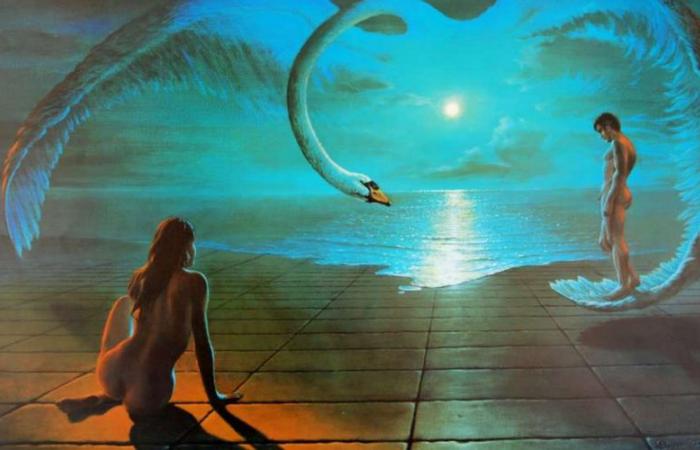Through a retrospective of commercial pictorial art in the 20th century, the MIAM in Sète opens the door to another history of contemporary painting.
Feeling uneasy. A gaggle of children standing out from the horizon stare at you with their big empty eyes. The work, by the American Margaret Keane, was once considered to decorate the education pavilion at the New York International Fair in 1964. Deemed too bad by a journalist from the New York Times, it had was ultimately censored. Like an ultimate “historical snub”, today it welcomes visitors to the International Museum of Modest Arts (MIAM), in Sète. Hervé Di Rosa has struck again: with this new exhibition, he intends to show “another history of painting”.
Back kebab room
Certainly, the Sète icon of free figuration is not his first attempt. But the aesthetic gesture of presenting the ugly (the exhibition is called Beaubadugly) as worthy of exposure is always perilous. Because there is often a bit of snobbery behind taking what we perhaps call “kitch” a little too quickly seriously. But let’s say it straight away, the proposal from Di Rosa and art history researcher Jean-Baptiste Carobolante does not fall into this pitfall. Conversely, by bringing us straight into a world filled with garage sale crusts and kebab back room paintings, the exhibition surprises with the evocative power created by the accumulation of productions.
Reproducibility
Because, and this is one of the main lines of research of Jean-Baptiste Carobolante, it is a question here of questioning the pictorial art of the 20the century in its commercial version. Hear, the paintings that were sold in supermarkets or on the side of the highway. Which populated popular interiors at the time of the advent of the consumer society. In this whirlwind of artists now forgotten, we sometimes recognize some. THE Little Poulbots in particular, these figures of Parisian street kids painted by Michel Thomas and varied to the point of becoming an integral part of the national imagination.
This is also what questions Beaubadugly, the work of art at the time of its reproducibility to take up a Benjaminian question. This is evidenced by the multitude of paintings hung on the main wall. Saturating the space, these works commissioned from a Neapolitan painter who created them in record time break down the movement of a seascape like the burst mode of a camera. The mediums mix, the ugly disappears and we realize with Adorno that “mass society not only produced junk for customers, it produced customers themselves”.






